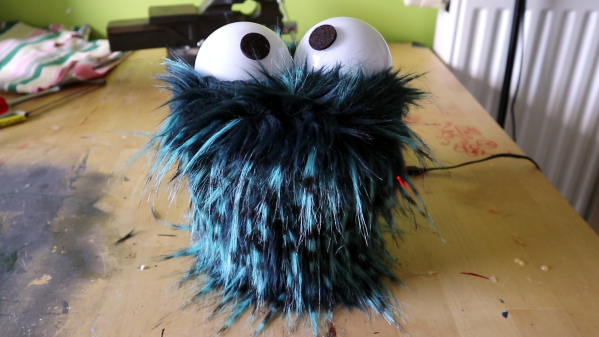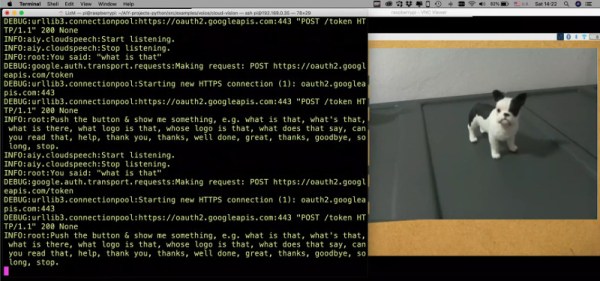What’s worse than unleashing a monster on the internet? Allowing the internet to control the monster! But that’s just what [8BitsAndAByte] did, created a monster that anyone on the internet can control. Luckily for us, this monster only talks.
This is a very simple project and most of the parts are off the shelf. Hardware wise the monster’s body is made out of a plastic flowerpot; its mouth is a bit of wood that covers the top of the flowerpot; its eyes, two halves of a plastic sphere painted white with some felt for irises. And then whole thing is covered in some blue fake fur.
Electronics wise, a Raspberry Pi is running the show and handling the text-to-speech is an AIY Voice Hat. A servo fits inside the flowerpot to open and close the monster’s mouth. On the software end of things, a bit of Python has been written that waits for a bit of text, sends it off to the Voice Hat’s text-to-speech module and moves the servo to open and close the mouth. The scary part, connecting the monster to the internet, is done with remo.tv, which is some open-source code hosted on GitHub specifically for allowing control of robots over the internet.
This is a neat little project which is simple enough that kids could build one themselves. The instructions and the python script are up on the Instructables page, and you can see the monster in action at its page on remo.tv. Perhaps [8BitsAndAByte] could add a couple of these internet controlled robot arms to the monster to create a monster that could create some real havoc!















